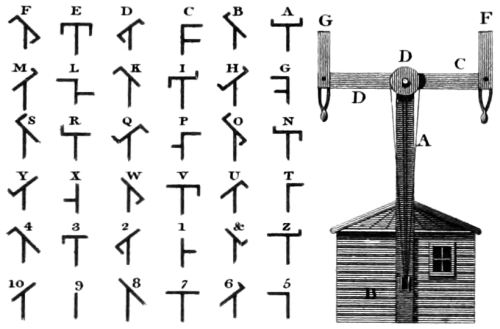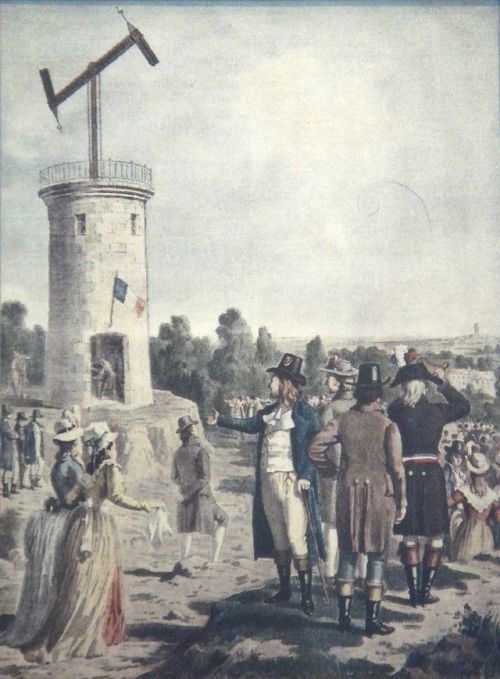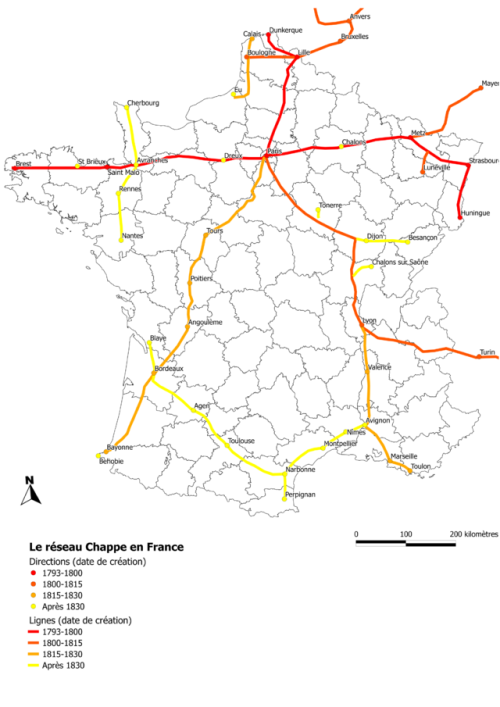Cacciatricediartemide - Diario Di Una Cacciatrice Di Artemide


More Posts from Cacciatricediartemide and Others

You deserve a calm love with someone who sees you, hears you, understands you, appreciates you, supports you, loves you and grows with you. Someone who makes your inner child feel safe, gives you unrequested reassurance, and treats you like magic even after they've experienced it.







Yūsha Yoshihiko to Maō no Shiro (勇者ヨシヒコと魔王の城, lit. “The Hero Yoshihiko and the Demon King’s Castle”)
Ouch! This is painful.


Stop checking on people that aren’t checking on you

I am simply thankful for your existance- whether I am meant to be a part of it or not.
Beau Taplin (via qvotable)



Napoleonic France’s wireless communication network— The Semaphore Line
Before the telegraph fast traveling communication was quite difficult, especially over long distances. The most common way of communicating over long distances was by courier, such as a fast pony or ship. This method could take weeks, months, or perhaps even years. Some ingenious peoples had the idea of using smoke signals, torches, and flag signals for faster communication. In 1792 a Frenchman named Claude Chappe invented the Semaphore Telegraph. The Semaphore Telegraph consisted of a series of towers placed over a certain distance which would communicate to each other visual coded messages. Each semaphore tower had a fixture with black movable arms which could be rotated and moved to symbolize a certain letter in the alphabet, number or symbol. Altogether, the two arms and crossbar could create up to 196 symbols. Chappe chose this system over signal fires, lamps, flags, and mirrors because he determined through experimentation that it was the easiest to see over long distances. In each tower, a man would watch the closest nearby tower through a telescope. When one tower transmitted a message, the adjoining tower would do the same, communicating the message down the line until it arrived from point A to point B. The Semaphore Line used encoded messages as well, and each Semaphore tower was issued a secret codebook.
Claude Chappe’s first line streched from Strasbourg to Paris with 50 Semaphore towers relaying messages. Originally the line was used to communicate commodities prices for investors in Strasbourg. However the French Consul/Future Emperor Napoleon Bonaparte saw value in the system as tool for the French Government and military. He sponsored Chappe to build a system of Semphore lines in order to send military messages to the frontlines in Germany, Belgium, the Netherlands, and Italy. After Napoleon’s fall, construction of Semaphore lines continued and gradually expanded. By the mid 19th century, a network of lines connecting Paris with most major French cities had been built, with at network of 556 stations stretching over 3,000 miles. Other nations such as the UK, Sweden, Prussia, Spain, Canada, and United States adopted similar systems. By 1850, use of the Semphore line waned as telegraph technology became more common.
-
 mexican-rug-dealer liked this · 2 months ago
mexican-rug-dealer liked this · 2 months ago -
 vibraniumqueen liked this · 3 months ago
vibraniumqueen liked this · 3 months ago -
 maliceious reblogged this · 3 months ago
maliceious reblogged this · 3 months ago -
 partridge-in-a-pantry reblogged this · 3 months ago
partridge-in-a-pantry reblogged this · 3 months ago -
 partridge-in-a-pantry liked this · 3 months ago
partridge-in-a-pantry liked this · 3 months ago -
 nineoftoads reblogged this · 3 months ago
nineoftoads reblogged this · 3 months ago -
 thedichotomist liked this · 3 months ago
thedichotomist liked this · 3 months ago -
 loverboy-havocboy liked this · 1 year ago
loverboy-havocboy liked this · 1 year ago -
 akimbo628 reblogged this · 1 year ago
akimbo628 reblogged this · 1 year ago -
 mrslectermoriarty liked this · 1 year ago
mrslectermoriarty liked this · 1 year ago -
 tmblrclndr reblogged this · 1 year ago
tmblrclndr reblogged this · 1 year ago -
 calciumlimerust reblogged this · 1 year ago
calciumlimerust reblogged this · 1 year ago -
 calciumlimerust reblogged this · 1 year ago
calciumlimerust reblogged this · 1 year ago -
 one-lonely-king liked this · 1 year ago
one-lonely-king liked this · 1 year ago -
 zanyexpertkitten liked this · 1 year ago
zanyexpertkitten liked this · 1 year ago -
 nyadead liked this · 1 year ago
nyadead liked this · 1 year ago -
 r-ellen-blog liked this · 1 year ago
r-ellen-blog liked this · 1 year ago -
 8jinie liked this · 1 year ago
8jinie liked this · 1 year ago -
 subduction-induction liked this · 1 year ago
subduction-induction liked this · 1 year ago -
 sarahtsang reblogged this · 1 year ago
sarahtsang reblogged this · 1 year ago -
 the-stinky-squid reblogged this · 1 year ago
the-stinky-squid reblogged this · 1 year ago -
 the-stinky-squid liked this · 1 year ago
the-stinky-squid liked this · 1 year ago -
 headhotelmess liked this · 1 year ago
headhotelmess liked this · 1 year ago -
 blackrabbitofdeath liked this · 1 year ago
blackrabbitofdeath liked this · 1 year ago -
 screamingwombatgirl reblogged this · 1 year ago
screamingwombatgirl reblogged this · 1 year ago -
 screamingwombatgirl liked this · 1 year ago
screamingwombatgirl liked this · 1 year ago -
 ohphiuchus liked this · 2 years ago
ohphiuchus liked this · 2 years ago -
 lizardperson liked this · 2 years ago
lizardperson liked this · 2 years ago -
 aranhin liked this · 2 years ago
aranhin liked this · 2 years ago -
 fair-fae liked this · 2 years ago
fair-fae liked this · 2 years ago -
 camelchoir liked this · 2 years ago
camelchoir liked this · 2 years ago -
 ladyswillmart reblogged this · 2 years ago
ladyswillmart reblogged this · 2 years ago -
 ladyswillmart liked this · 2 years ago
ladyswillmart liked this · 2 years ago -
 snusmumriken113 reblogged this · 2 years ago
snusmumriken113 reblogged this · 2 years ago -
 shamelessarcadecollection liked this · 2 years ago
shamelessarcadecollection liked this · 2 years ago -
 aplaceofnoaccount liked this · 2 years ago
aplaceofnoaccount liked this · 2 years ago -
 palemusicjellyfish reblogged this · 2 years ago
palemusicjellyfish reblogged this · 2 years ago -
 herbcitty reblogged this · 2 years ago
herbcitty reblogged this · 2 years ago -
 antlrqwn liked this · 2 years ago
antlrqwn liked this · 2 years ago -
 deadgrlfromars liked this · 2 years ago
deadgrlfromars liked this · 2 years ago -
 localwench reblogged this · 2 years ago
localwench reblogged this · 2 years ago -
 several-cats reblogged this · 2 years ago
several-cats reblogged this · 2 years ago -
 whole-hole-hold reblogged this · 2 years ago
whole-hole-hold reblogged this · 2 years ago -
 brairsren reblogged this · 2 years ago
brairsren reblogged this · 2 years ago
